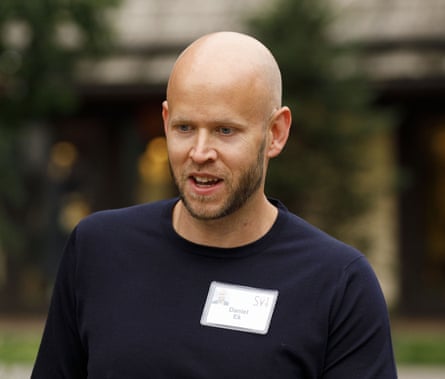Spotify has confirmed there will be long-rumoured changes to their royalty payments from early 2024, which include a controversial policy requiring tracks to get a minimum of 1,000 listens every year to receive royalties.
Certain styles of “noise” tracks such as white noise and sleep sounds must now be at least two minutes long, and Spotify will levy a new fee on labels or distributors who they deem to be generating artificial streams – where bots or click-farms are used to fraudulently inflate an artist’s streaming figures, and siphon off royalty payments from Spotify.
Spotify claims the improvements will give extra revenue to artists, by redirecting funds that had previously gone to these rights holders, or to distributors that do not send royalties below a particular amount.
Tom Connaughton, managing director of Spotify UK, says: “99.5% of all tracks that are streamed on Spotify will still be monetised; a very small percentage of tracks will be impacted by these changes.”. He says the global changes will “give a further $1bn (£798m) to emerging and professional artists over the span of the next five years … There are still bad actors who attempt to steal money from the pool that should be going to hardworking emerging and professional artists.”
Of demonetising tracks that earn fewer than 1,000 streams each year, he says: “Spotify will not be making any additional money in this model – what we’re doing is using the tens of millions of dollars that sit in this category to increase the payments to all eligible tracks.”
Spotify have argued that the earnings from tracks with fewer than 1,000 streams rarely reach the artists anyway, because labels and distributors generally require a minimum withdrawal amount. When these small payments don’t meet that threshold, a company spokesman said the payments remain “sat in bank accounts of distribution companies. We are not taking money out of the hands of emerging artists – we are just taking it from bank accounts lying dormant and earning interest.”
But some independent artists are critical of the precedent set by the 1,000-stream minimum requirement.
“I think 1,000 is too much,” says LA-based independent musician Brandon Washington, who goes by the stage name Ando San. “To an extent it’s true that there’s an oversaturation of artists on Spotify. But without them there would be no Spotify – the platform only exists because of artists and music.”
He acknowledges that fraudulent streams are “a big problem”, but he is critical of the way Spotify pays artists and what this new announcement means for the way small, independent artists are viewed.
“When you put a number on it, you’re putting a number on art,” he says. “That’s a slippery slope to be on. People should be concerned about that. Spotify changed the whole industry in the way that people look at the way a successful artist should be. Regardless of how many streams you have, it’s still your music and your art. As a listener, this would discourage me from listening to music on Spotify.”
Amelia Fletcher, an academic at the University of East Anglia and a member of the Centre for Competition Policy, echoes this. “Any attempt to make art is valid,” she says. “The fact that lots of people make art and music without recompense doesn’t nullify the artistic value of that music.”
She argues that the streaming giant should adopt a “user-centric model”, an alternative to the current model used by the likes of Spotify and Apple Music where money from listeners goes into a giant pool which is then paid out to artists based on their share of total streams across the whole platform.
In a user-centric model, “each subscriber’s payment would be shared proportionally between the tracks that individual listens to,” explains Fletcher. “So if you have someone who’s really enthusiastic about indie music, that money would get shared out among the artists that they listen to. More would be allocated per track if they listen carefully to fewer tracks than if they just have music playing all the time in the background.”
Rival streaming services Deezer and Soundcloud have both recently experimented with this model in partnerships with major labels. Fletcher also argues a user-centric model “would address the fraud issue more effectively. Because if one user is listening to loads of tracks for money, the proportion going to each track would go down.”
Spotify’s new policy changes will be long-term. “I don’t think anything that we do is short term,” says a company spokesman. “These things are very much considered and we don’t anticipate ever going back on this.”
However, Washington fears further threshold increases. “What if [the minimum requirement] becomes 2,000, then 3,000, and maybe 5,000?” he says. “If this number increases it can impact a lot of people, it may even impact me and even bigger independent artists.” Connaugton responds to his worries by saying: “We’re very comfortable that where we’ve got to is the right threshold for supporting artists and putting more money in their pockets.”
As the streaming economy continues to evolve, Washington says independent artists will have to “advocate for each other outside of streams,” adding that he admires Bandcamp, the music company whose direct-to-consumer model sells downloads and physical releases. “It’s a better way to support people because there’s more direct contact with the artist … buying merch, going out to see artists perform in gigs.” Now more than ever, Washington says, “there has to be more of this push”.

